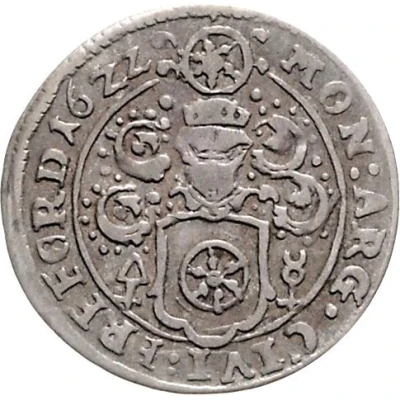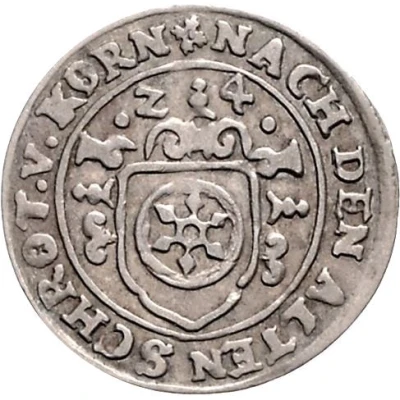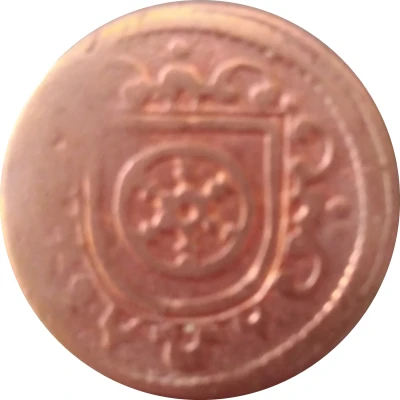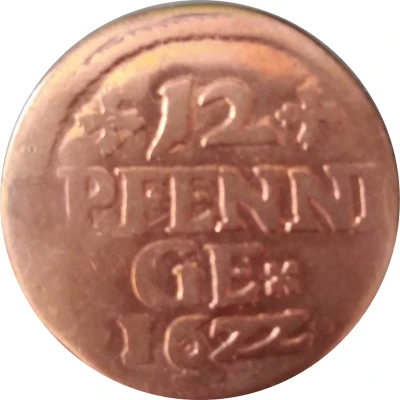1⁄24 Thaler - Frederick Charles Joseph of Erthal
1799 year| Billon | 1.99 g | - |
| Issuer | City of Erfurt (German States) |
|---|---|
| Prince-archbishop | Mainz Archbishopric › Frederick Charles Joseph of Erthal (Friedrich Karl Joseph von Erthal) (1774-1802) |
| Type | Standard circulation coin |
| Year | 1799 |
| Value | 1⁄24 Thaler |
| Currency | Thaler |
| Composition | Billon |
| Weight | 1.99 g |
| Shape | Round |
| Orientation | Medal alignment ↑↑ |
| Demonetized | Yes |
| Updated | 2024-10-05 |
| Numista | N#313398 |
|---|---|
| Rarity index | 97% |
Reverse
Five-line inscription with denomination, SM (for Scheide Munz), and date.
Lettering:
24
EINEN
THALER
S M
1799
Comment
This type doesn't appear in KM, Schön DM, or Gräßler. The only reference found is an auction reference from a 2011 auction: https://www.acsearch.info/search.html?id=987042
The obverse of the coin is similar to the Erfurt coins of 1801 and 1802 and the reverse is similar to coins issued in 1800, but there are differences from those issues (and from other coins of Erfurt):
- There is no mint mark, even though every Erfurt coin from 1773 on had a mint mark.
- The tail of the R in THALER is very thin and without the serif the 1800 coins have. The M in SM has curved sides and is very thin.
- The 1 in 1799 has a large flat base. Other Erfurt coins from 1756 to 1800 have a bifurcated base. The coins issued 1801-1802 have italicized digits.
The auction listing mentioned Collection Walther. If you have the auction reference for that collection please update this entry from that reference.
Interesting fact
The 1799 1/24 Thaler coin from the City of Erfurt (German States) is interesting because it features a unique design element - a small hole in the center of the coin. This hole was intentionally placed there by the mint as a way to signify the coin's authenticity and to prevent counterfeiting. This feature is known as a "proof hole" and was commonly used in coins during that time period.



